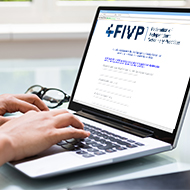What is evidence-based practice and why do we need it?

Andrea Jeffery speaking at the BVNA Congress in Telford.
Speaking at the BVNA Congress in Telford, Andrea Jeffery, RVN, from the University of Bristol opened delegates' eyes to the practical application of evidence-based methods.
She said that, in a nutshell, evidence-based practice is finding the best evidence available and identifying the best practice alongside the patient's needs and client preferences. This is essentially an analytical approach to what veterinary nurses do every day of their working lives – the nursing process.
It is important to look at evidence set against a hierarchy that helps to assess its credibility. Carry out searches with care and don't underestimate the value of the RCVS Library and the RCVS Knowledge scheme.
A useful approach to reviewing literature is to imagine that the author is sitting in front of you. Ask them questions about their affiliations, their motivation in writing the paper and their thought processes. If they don't give you the answers to your questions – or in other words, you cannot find the answers in their paper – then view it with circumspection.
Veterinary nurses should never be afraid to challenge current practice in the light of evidence that they may reveal. "Just because we have always done things in a certain way does not mean that we should continue to do so," Andrea said. This is especially important given the registration and professional accountability of RVNs.
During question time at the end of her presentation, the speaker encouraged vets and vet nurses to leave "their silos" and work more closely together. This breaking down of barriers and more collaborative approach must begin in veterinary schools during the training process.
Anyone who missed this lecture, or who would like to find out more about evidence-based practice, is encouraged to contact Andrea at andrea.Jeffery@bristol.ac.uk



 FIVP has shared a survey, inviting those working in independent practice to share their views on the CMA's proposed remedies.
FIVP has shared a survey, inviting those working in independent practice to share their views on the CMA's proposed remedies.